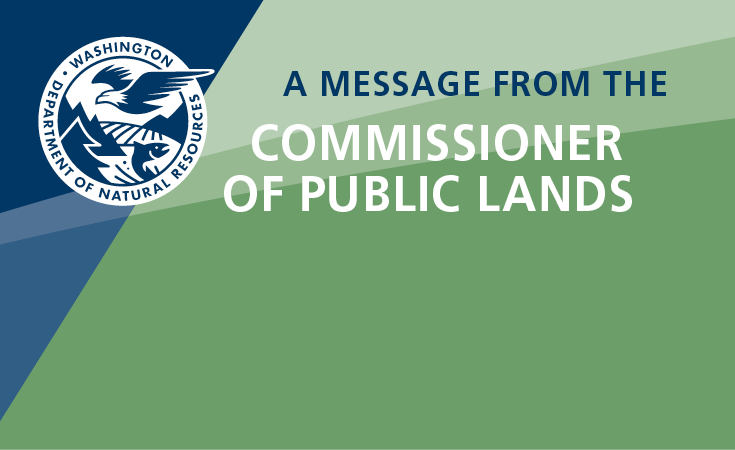Watershed Analysis
A watershed analysis is an in-depth examination of a watershed’s biological and physical characteristics. A forest practices watershed analysis addresses the cumulative effects that forest practices, such as timber harvests or road buidling, may have on cultural resources and public resources, such as fish, water, and capital improvements. Landowners, managers and regulators use these analyses to develop “prescriptions” to protect public resources, and "voluntary management strategies” to protect and manage cultural resources in the watershed.
Forest Practices Watershed Analysis Manual
Board Manual Section 11, Standard Methodology for Conducting Watershed Analysis, (the watershed analysis manual) is the technical manual for the Forest Practices Board's rules on Watershed Analysis (Chapter 222-22 WAC).
Scientists use this manual to assess the condition of public resources such as water quantity, water quality, and slope stability, and to assess the presence of cultural resources including archaeological resources, traditional materials, traditional places, and historic sites. Forest managers then use the public resource assessments to develop site-specific prescriptions that further regulate forest practices within individual Watershed Administrative Units (WAUs). They use cultural resources assessments to develop management strategies that are implemented voluntarily by landowners and land managers.
Download the Watershed Analysis Manual (17.6MB PDF)
(INSTRUCTIONS. To download: right-click on the link, select "save target as" or "save as" from the short-cut menu, and save the file to your computer. Then open the file using Adobe Acrobat Reader, not your internet browser.)
Download manual sections (PDFs):
Watershed Analysis Manual - Part 1-8
Watershed Analysis Manual Appendix A - Mass Wasting
Watershed Analysis Manual Appendix B - Surface Erosion
Watershed Analysis Manual Appendix C - Hydrologic Change
Watershed Analysis Manual Appendix D - Riparian Function
Watershed Analysis Manual Appendix E - Stream Channel
Watershed Analysis Manual Appendix F - Fish Habitat
Watershed Analysis Manual Appendix G - Water Quality Module
Watershed Analysis Manual Appendix H - Public Works
Watershed Analysis Manual Appendix I - Routing
Watershed Analysis Manual Appendix J - Cultural Resources
Watershed Analysis Manual Appendix K - Mass Wasting Prescription Reanalysis
Watershed Analysis Manual Appendix A - Mass Wasting
Watershed Analysis Manual Appendix B - Surface Erosion
Watershed Analysis Manual Appendix C - Hydrologic Change
Watershed Analysis Manual Appendix D - Riparian Function
Watershed Analysis Manual Appendix E - Stream Channel
Watershed Analysis Manual Appendix F - Fish Habitat
Watershed Analysis Manual Appendix G - Water Quality Module
Watershed Analysis Manual Appendix H - Public Works
Watershed Analysis Manual Appendix I - Routing
Watershed Analysis Manual Appendix J - Cultural Resources
Watershed Analysis Manual Appendix K - Mass Wasting Prescription Reanalysis
Forest practices applications that do not incorporate the applicable public resources prescriptions for a watershed must have State Environmental Policy Act (SEPA) review prior to review by the Forest Practices Division of DNR.
Approved Watershed Analyses
View approved watershed analyses specific to individual watersheds. The mass wasting prescriptions described are to be applied within Mass Wasting Map Units that contain potentially unstable landforms, such as inner gorges, bedrock hollows, convergent headwalls and deep seated landslides and other features that are addressed in the forest practices rules. Watershed analyses also began to establish standards for technical reports and requirements for the specialized scientists who examine these watershed. Current forest practices rules require a qualified expert and a geotechnical report when potentially unstable landforms could be affected by a proposed forest practice.
Approved Watershed Analyses with Rescinded Mass Wasting Prescriptions
View the Approved Watershed Analyses with Rescinded Prescriptions for Mass Wasting. After reviewing all of the completed watershed analyses, DNR determined that a reanalysis of the mass wasting prescriptions in each was needed to validate their effectiveness. However, most of the landowners the department contacted opted not to complete a reanalysis. Instead, they agreed to follow the forest practices rules for activities affecting potentially unstable landforms. In areas where a reanalysis will NOT be performed, DNR has completed the SEPA process to rescind the mass wasting prescriptions. The rescinded mass wasting prescriptions may be used as a screening tool.


